When it comes to transportation and logistics, understanding the weight limits of your flatbed trailer is paramount. Ensuring that you adhere to these limits not only guarantees the safety of your cargo and drivers but also ensures compliance with state and federal regulations. At CarMax Vehicle, we specialize in manufacturing flatbed trailers that meet and exceed industry standards, providing you with reliable solutions tailored to your specific needs.
What is a Flatbed Trailer?
A flatbed trailer is a versatile type of trailer with a flat, level surface and no sides or roof. This design makes it ideal for transporting a wide variety of goods, including machinery, building materials, and oversized loads. The open design allows for easy loading and unloading, making it a popular choice in industries such as construction, agriculture, and manufacturing.
Understanding Weight Limits: Definitions and Importance

Gross Vehicle Weight Rating (GVWR)
The Gross Vehicle Weight Rating (GVWR) is the maximum weight a trailer can safely carry, including the weight of the trailer itself plus the cargo. Exceeding the GVWR can lead to serious safety hazards, increased wear and tear on the trailer, and potential legal repercussions.
Gross Axle Weight Rating (GAWR)
GAWR refers to the maximum distributed weight the trailer’s axles can support. Understanding GAWR is crucial for ensuring that the load is evenly distributed to prevent axle overload, which can cause tire blowouts, brake failures, and structural damage to the trailer.
Importance of Adhering to Weight Limits
Adhering to weight limits is essential for several reasons:
- Safety: Prevents accidents caused by trailer instability and brake failure.
- Compliance: Avoids hefty fines and legal issues related to overloading.
- Longevity: Reduces wear and tear, extending the lifespan of your trailer.
- Efficiency: Ensures optimal fuel efficiency by maintaining the trailer’s designed load capacity.
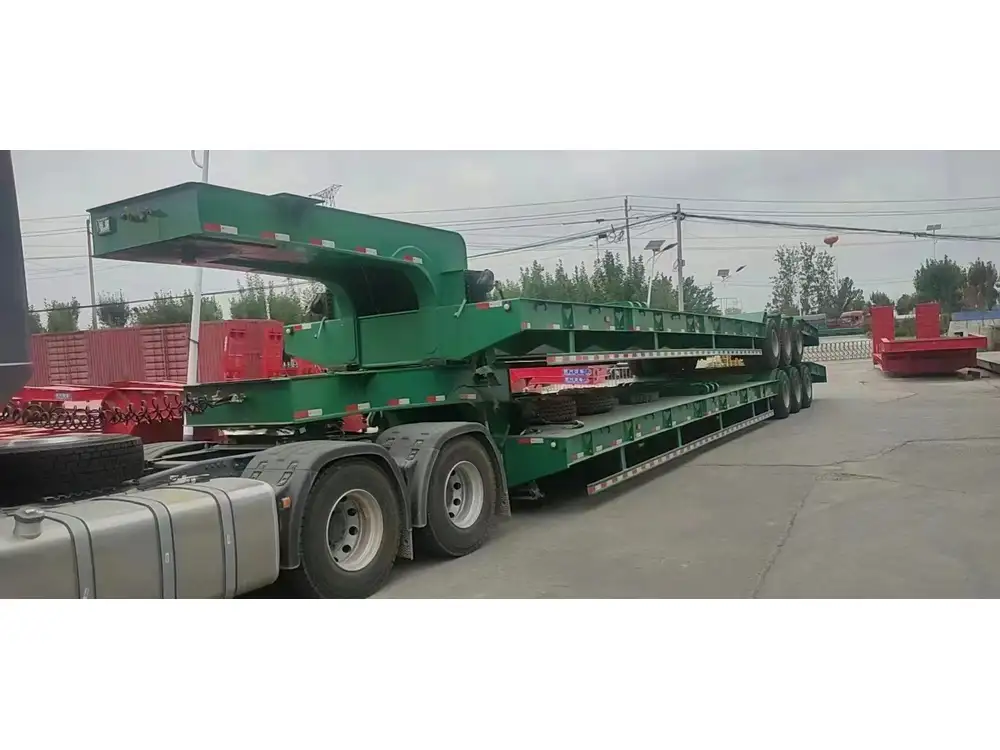
Factors Influencing Flatbed Trailer Weight Limits
Several factors determine the weight limits of a flatbed trailer. Understanding these can help you make informed decisions when loading and operating your trailer.
1. Trailer Gross Vehicle Weight Rating (GVWR)
The GVWR is set by the manufacturer and is based on the trailer’s design, materials, and construction quality. It encompasses the total allowable weight, including both the trailer and its cargo.
2. Axle Ratings and Distribution
Each axle on a trailer has a specific weight rating. Proper distribution of weight across all axles ensures that no single axle is overloaded, which can compromise the trailer’s stability and safety.

3. Tire Ratings and Maintenance
Tires are rated based on the maximum load they can carry. Regular maintenance and inspections are essential to ensure that tires can handle the weight they are subjected to, preventing blowouts and other tire-related issues.
4. Trailer Materials and Construction
The materials used in constructing the trailer, such as steel or aluminum, and the overall build quality significantly impact the weight limits. A sturdier build allows for higher weight capacities, providing greater flexibility in cargo transportation.
Calculating Safe Load Limits
Accurately calculating your trailer’s load limits is crucial for safe and efficient transportation. Here’s a step-by-step guide to help you determine your safe load capacity.

Step 1: Determine the Trailer’s GVWR
Locate the GVWR label on your trailer, typically found on the frame near the axles or on the side of the trailer. This value represents the maximum allowable weight for the trailer, including both cargo and the trailer itself.
Step 2: Weigh the Trailer
Use a certified scale to measure the weight of your empty trailer (also known as the curb weight). This information is necessary to calculate the maximum payload capacity.
Step 3: Calculate Payload Capacity
Subtract the trailer’s curb weight from the GVWR to determine the maximum payload capacity.
Formula:
Payload Capacity = GVWR - Curb Weight
Step 4: Consider Axle Ratings
Ensure that the payload does not exceed the combined Gross Axle Weight Rating (GAWR) of all axles. Distribute the weight evenly across all axles to maintain balance and stability.
Example Calculation
- GVWR: 20,000 lbs
- Curb Weight: 5,000 lbs
- Payload Capacity: 20,000 lbs – 5,000 lbs = 15,000 lbs
If your trailer has two axles with a GAWR of 8,000 lbs each, the combined GAWR is 16,000 lbs. Since 15,000 lbs is less than 16,000 lbs, the load is within safe limits.
Regulations and Compliance
Compliance with weight regulations is not only a legal obligation but also a critical aspect of safe transportation. Understanding these regulations helps prevent fines, legal issues, and ensures the safety of your cargo and the general public.

Federal Regulations
The Federal Motor Carrier Safety Administration (FMCSA) sets the standards for weight limits on interstate highways. The standard maximum weight for a single axle is 20,000 lbs, while a tandem axle combination can carry up to 34,000 lbs. These regulations aim to prevent road damage and maintain safety standards.
State Regulations
State-specific regulations may vary and can impose stricter limits than federal guidelines. It’s essential to be aware of the rules in each state you plan to travel through to avoid penalties and ensure compliance.
Permits for Overweight Loads
If your cargo exceeds standard weight limits, obtaining an overweight permit is necessary. These permits outline specific routes, times, and conditions under which you can transport the oversized load. CarMax Vehicle can assist in navigating the permit process, ensuring that your transport complies with all regulations.

Common Mistakes and How to Avoid Them
1. Ignoring Weight Distribution
Uneven weight distribution can lead to trailer instability, increased wear on certain axles, and difficulty in handling. Always distribute the load evenly to maintain balance and safety.
2. Overloading the Axles
Exceeding the GAWR of your trailer’s axles can cause severe damage and increase the risk of accidents. Regularly check and adhere to axle weight ratings to prevent overloading.
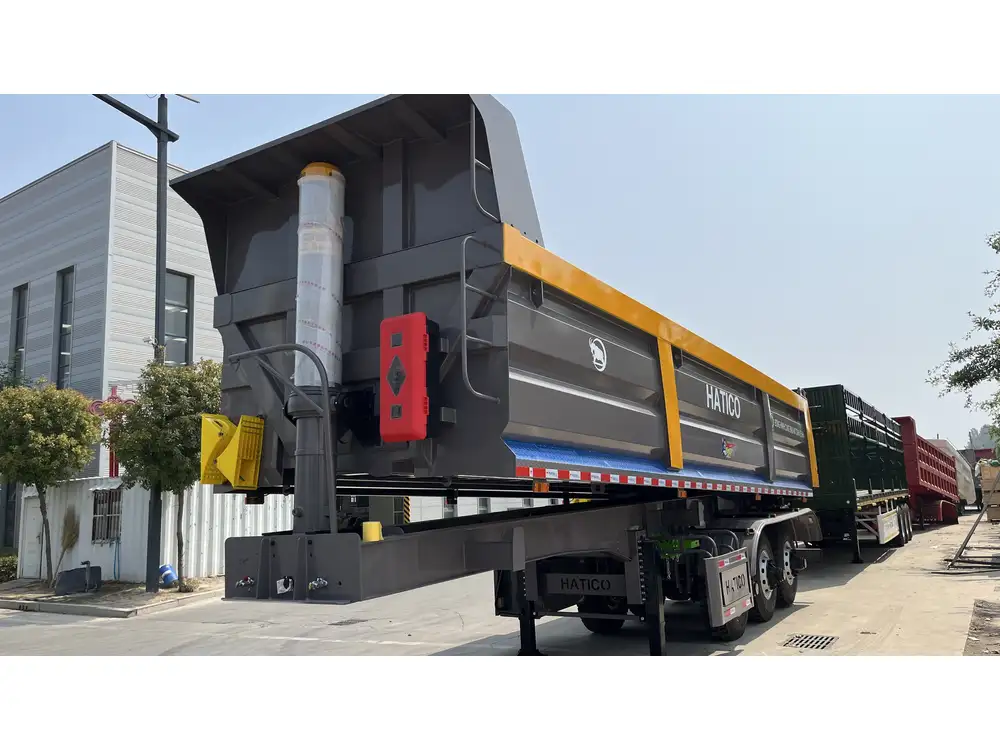
3. Neglecting Tire Maintenance
Worn or improperly inflated tires cannot support the trailer’s weight effectively, leading to blowouts and reduced control. Regularly inspect and maintain your tires to ensure they are in optimal condition.
4. Underestimating Cargo Weight
Inaccurate estimations of cargo weight can lead to overloading. Always weigh your cargo before loading to ensure it does not exceed the trailer’s payload capacity.
5. Failing to Secure the Load
An unsecured load can shift during transit, causing imbalance and potential accidents. Use appropriate tie-downs and secure the cargo to prevent movement.

Choosing the Right CarMax Vehicle Flatbed Trailer
Selecting the appropriate flatbed trailer is crucial for meeting your transportation needs while adhering to weight limits and safety standards. At CarMax Vehicle, we offer a range of flatbed trailers designed to accommodate various load requirements.
Features that Support Optimal Weight Limits
- High-Strength Materials: Our trailers are constructed using robust materials that enhance durability and weight capacity.
- Advanced Suspension Systems: Optimized suspension systems ensure smooth weight distribution and reduced wear on axles and tires.
- Multiple Axle Configurations: Choose from single, tandem, or spread axle configurations to match your load requirements.
- Customizable Designs: Tailor your trailer with features such as extendable beds, removable stakes, and reinforced decking to suit specific cargo needs.
Customization Options
CarMax Vehicle offers customizable options to ensure that your flatbed trailer meets your exact specifications:
- Adjustable Load Bars: Facilitate secure loading and unloading of cargo.
- Integrated Lighting Systems: Enhance visibility and compliance with safety regulations.
- Reinforced Flooring: Support heavier loads and improve durability.
- Custom Branding: Promote your business with personalized branding options.

Maintenance Tips to Ensure Weight Limit Compliance
Regular maintenance is essential to ensure your trailer remains in optimal condition and capable of safely carrying loads within its weight limits. Here are some maintenance tips to keep your flatbed trailer performing at its best:
1. Routine Inspections
Conduct regular inspections of the trailer’s frame, axles, tires, and suspension system. Look for signs of wear, damage, or corrosion that could compromise the trailer’s strength and stability.
2. Tire Maintenance
- Check Tire Pressure: Maintain the recommended tire pressure to ensure optimal load-bearing capacity.
- Inspect Tread Depth: Replace tires with insufficient tread to prevent blowouts and improve traction.
- Rotate Tires: Regular rotation ensures even wear and extends the lifespan of your tires.
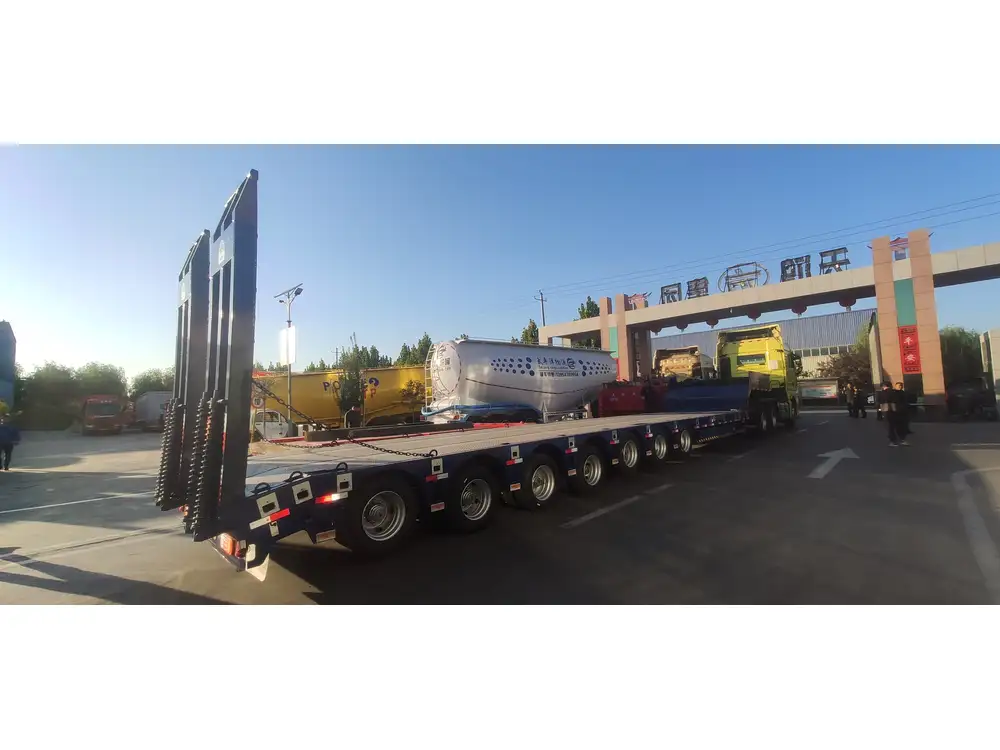
3. Brake System Maintenance
Ensure that the brake system is functioning correctly by inspecting brake pads, discs, and hydraulic lines. Properly maintained brakes are critical for safely managing the weight of your load.
4. Load Securement Equipment
Regularly check the condition of straps, chains, and other load securement equipment. Replace any worn or damaged components to maintain effective load stability.
5. Cleanliness
Keep the trailer clean and free from debris that could cause rust or other damage. Regular cleaning also helps in identifying potential issues early on.
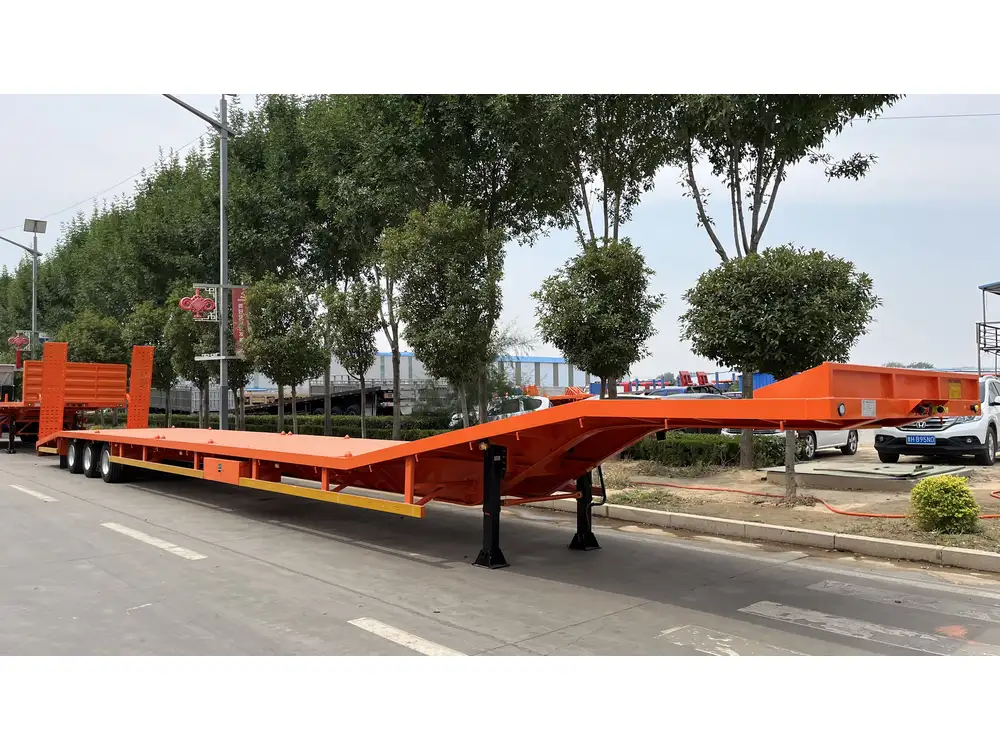
Technology and Innovations in Flatbed Trailers
Advancements in technology have significantly improved the performance and safety of flatbed trailers. At CarMax Vehicle, we integrate the latest innovations to enhance your transportation experience.
1. Advanced Suspension Systems
Modern suspension systems provide better weight distribution, reducing stress on axles and improving ride quality. This results in safer and more efficient transportation, especially when carrying heavy or uneven loads.
2. Smart Load Management
Incorporating smart sensors and monitoring systems allows for real-time tracking of load distribution and trailer stability. This technology helps in making necessary adjustments during transit, ensuring safety and compliance.

3. Aerodynamic Designs
Innovative aerodynamic features reduce drag, improving fuel efficiency and reducing operational costs. These designs also contribute to a smoother ride and increased trailer longevity.
4. Integrated GPS and Telematics
Advanced GPS and telematics systems offer comprehensive tracking and management of your fleet. These tools provide valuable data on trailer performance, load conditions, and route optimization, enhancing overall efficiency.
5. Enhanced Material Technology
The use of high-strength, lightweight materials like aluminum alloys and reinforced steel composites increases trailer durability while optimizing weight capacity. These materials contribute to longer service life and better performance under heavy loads.
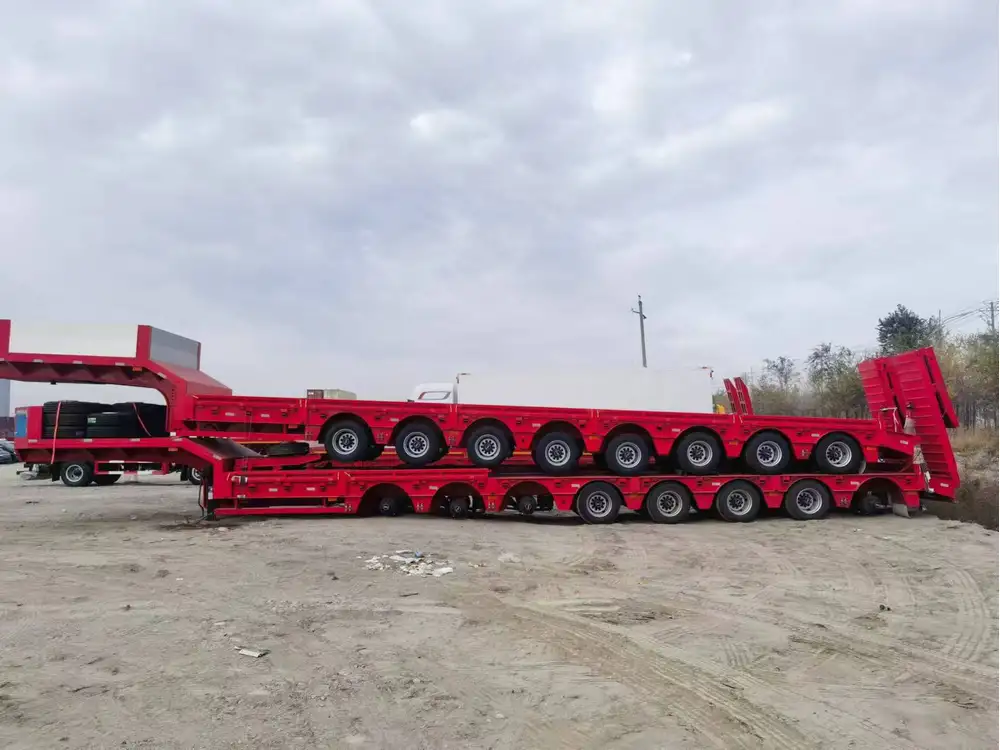
Choosing CarMax Vehicle for Your Flatbed Trailer Needs
At CarMax Vehicle, we are committed to providing high-quality flatbed trailers that meet the diverse needs of our clients. Our expertise in trailer manufacturing ensures that you receive a product that is reliable, safe, and tailored to your specific requirements.
Why Choose CarMax Vehicle?
- Expertise: Decades of experience in trailer manufacturing ensure top-notch quality and performance.
- Customization: We offer a wide range of customization options to suit your unique transportation needs.
- Quality Assurance: Rigorous testing and quality control processes guarantee that our trailers meet all safety and performance standards.
- Customer Support: Dedicated support teams assist you in selecting the right trailer and provide ongoing maintenance and service.
Our Product Range
CarMax Vehicle offers a comprehensive range of flatbed trailers, including:
- Standard Flatbed Trailers: Ideal for general cargo transportation with a balanced weight capacity.
- Extendable Flatbed Trailers: Perfect for oversized loads, offering adjustable lengths to accommodate varying cargo sizes.
- Heavy-Duty Flatbed Trailers: Designed for maximum weight capacities, suitable for transporting heavy machinery and large equipment.
- Custom Flatbed Trailers: Tailored solutions to meet specific requirements, including reinforced decks, specialized tie-down systems, and advanced safety features.
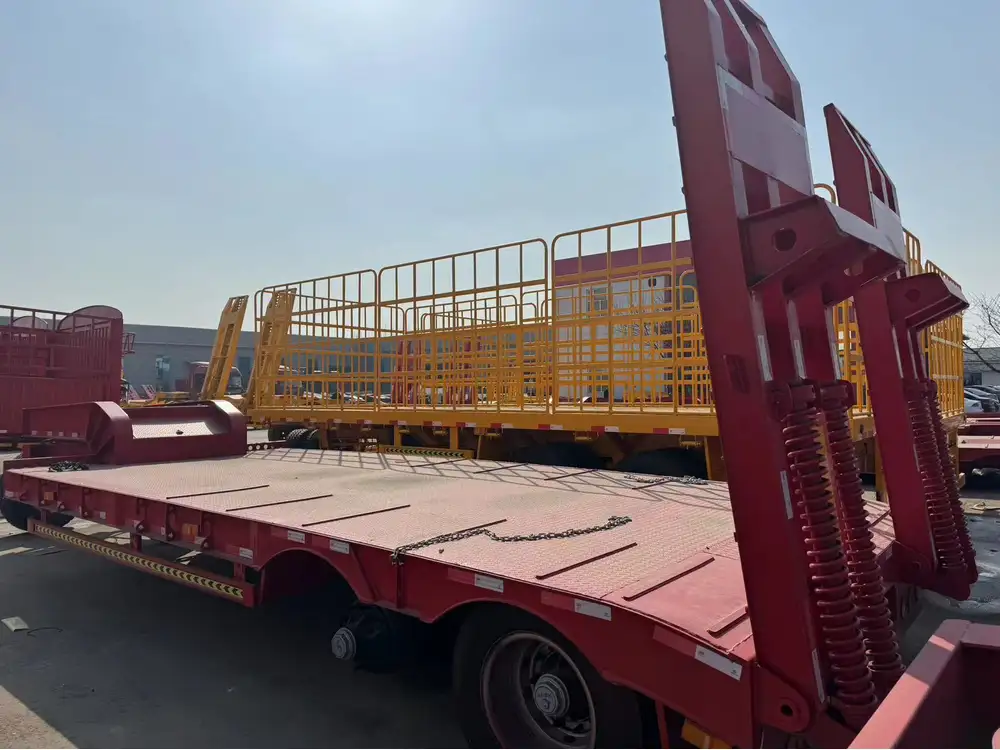
Conclusion
Understanding and adhering to flatbed trailer weight limits is essential for ensuring the safety, efficiency, and compliance of your transportation operations. At CarMax Vehicle, we are dedicated to providing high-quality flatbed trailers that meet your specific needs while maintaining the highest standards of safety and performance. By choosing the right trailer and following best practices for load management and maintenance, you can optimize your logistics operations and achieve greater success in your business.
Frequently Asked Questions
1. What is the typical weight limit for a standard flatbed trailer?
The typical weight limit for a standard flatbed trailer ranges from 15,000 to 20,000 pounds. However, this can vary based on the trailer’s construction, axle configuration, and materials used. Always refer to the manufacturer’s specifications, such as those provided by CarMax Vehicle, to determine the exact weight limit for your trailer.

2. How does weight distribution affect towing safety?
Proper weight distribution is critical for towing safety. Uneven weight distribution can cause trailer sway, reduce braking efficiency, and increase the risk of accidents. Ensuring that the load is evenly spread across all axles helps maintain trailer stability, improves handling, and prevents excessive wear on specific components.
3. Can I exceed the manufacturer’s weight limit on my flatbed trailer?
Exceeding the manufacturer’s weight limit is highly discouraged as it can lead to severe safety hazards, legal penalties, and significant damage to the trailer. Overloading can compromise braking systems, cause structural failures, and increase the likelihood of accidents. Always adhere to the specified weight limits to ensure safe and compliant operations.
4. How often should I inspect my flatbed trailer for weight compliance?
Regular inspections are essential for maintaining weight compliance and overall trailer safety. It’s recommended to inspect your trailer before and after each trip, as well as perform comprehensive maintenance checks monthly or after a set number of miles, depending on usage. Regular inspections help identify and address issues such as tire wear, brake performance, and structural integrity.

5. What are the penalties for exceeding flatbed trailer weight limits?
Penalties for exceeding flatbed trailer weight limits can vary by state but typically include hefty fines, vehicle impoundment, and potential legal action. Additionally, overloading can result in increased insurance premiums and liability in the event of an accident. It’s crucial to understand and comply with weight regulations to avoid these consequences and ensure safe transportation.



